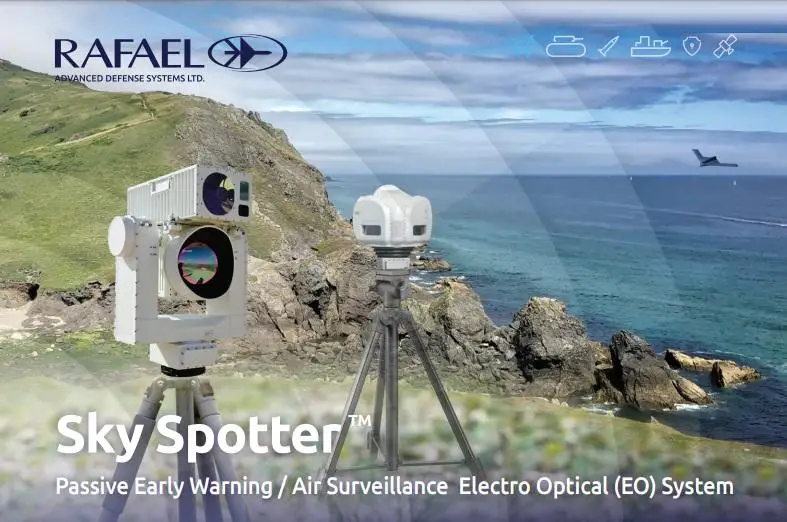South Korea’s military is considering the purchase of an Israeli “electric eye” as part of efforts to bolster its capabilities to detect small North Korean drones. The move comes as the South’s defense authorities have come under fierce criticism for the failure to counter the penetration of five North Korean drones into its airspace late last month. It was belatedly revealed that one of them even intruded into the no-fly zone, called P-73, near the presidential office in the central district of Yongsan. Citing the South Korean military, the Yonhap news agency reported that in order to beef up its airspace defense system, the military is considering pushing for the speedy acquisition of the Sky Spotter system.
After testing the system’s performance against dangers posed by the North’s drones, a decision regarding whether the military will approach the government for purchase will be made in the coming weeks. In December, what is believed to have been a squadron of North Korean drones broke through the inter-Korean border. South Korean military forces engaged in a futile attempt to bring down the unmanned aerial vehicles and sent interceptor aircraft and helicopters in pursuit of them. A total of drones, four of which belonged to North Korea, were spotted flying in the vicinity of Ganghwado Island in South Korea, while the fifth travelled to the northern part of the metropolitan region, which included Seoul. After some time had passed, the media in South Korea reported that just one of the five drones had returned to North Korea, while the other four had disappeared from radars.

Sky Spotter is a passive Early Warning System with a high probability of detection and a very low false alarm rate design by Israeli defense technology company Rafael Advanced Defense Systems Ltd. The Sky Spotter’s detection sensors are reinforced with NFOV multispectral investigation sensors which are pointed at the target by early detection of the WFOV/radar or by a team member’s slaving request. Operators can manage up to 4 sensors simultaneously, each with two channels. Originally developed to counter small drones, Sky Spotter can track aircraft and pinpoint their location. The Sky Spotter provides passive sensing, detection, tracking and identification of aerial targets. It remains unaffected by classic radar challenges: multipath, clutter, background, EW & CM, low RCS-stealthy targets. The Sky Spotter system, built by Rafael Advanced Defense Systems, has been in operation along the Gaza border.
Sky Spotter EO sensor improves the effectiveness of legacy radars by establishing a passive aerial defence sphere with a radius of one kilometre to tens of kilometres and beyond using a combination of extremely sensitive sensors. These sensors include Medium Wave Infra Red (MWIR), Short Wave Infra Red (SWIR), and Visible Imaging Spectrometer (VIS). Sky Spotter is made up of a sensor with a wide field of vision and constant vigil. The imaging that this sensor captures is automatically processed so that it can perform a sense-and-warn function as well as lock-and-track many objects at the same time. It is possible to get comprehensive coverage by adjusting the number of gazing sensors used in a system that is networked. The highly developed algorithms of automation, image processing, and artificial intelligence (AI) make it possible to engage, track, and manage many targets at the same time.
















